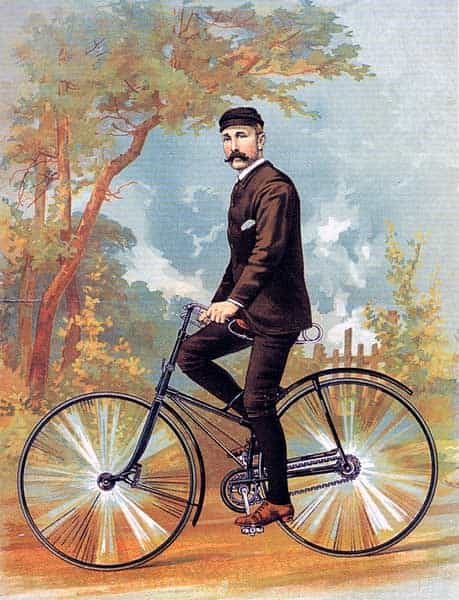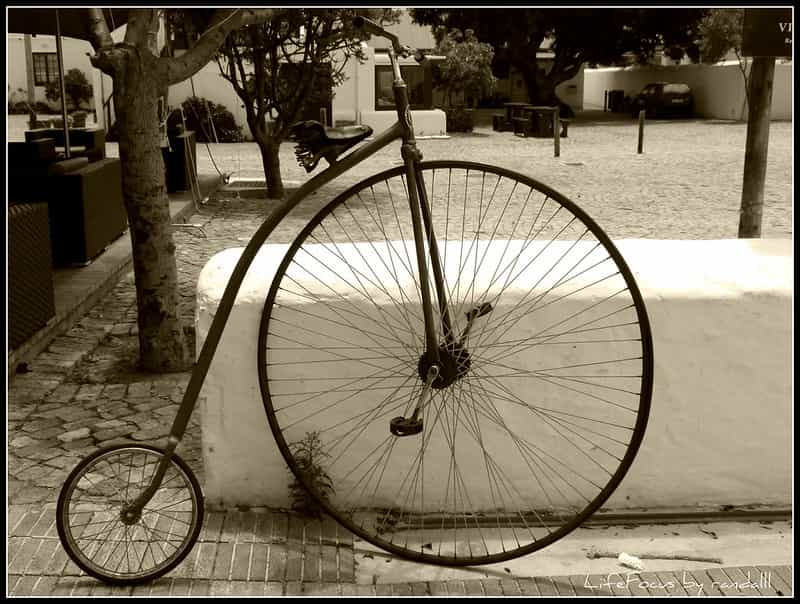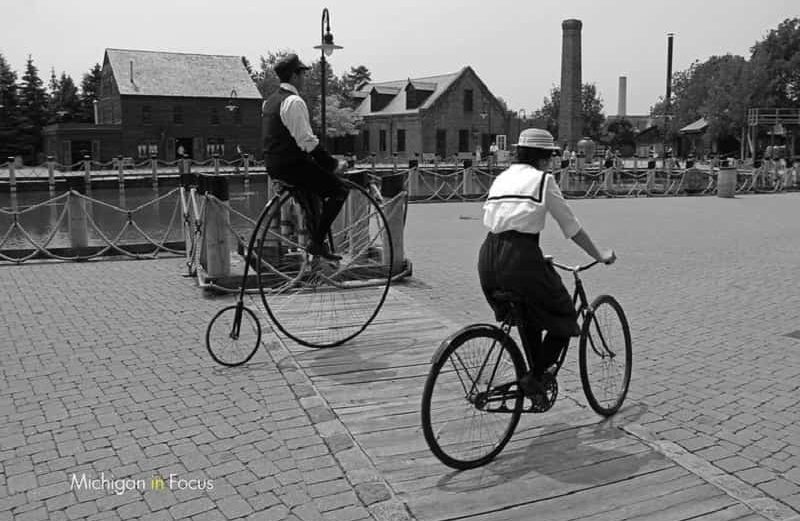When Was The Bicycle Invented? The first “Bicycle” was invented in 1817 by German, Baron-Karl von Drais. Technically it was a velocipede. It had No-Pedals, to perform it you had to run. For this purpose, it was nicknamed “The Hobby Horse”. It was built almost totally from wood, with Brass-Bushing & Steel-Rimmed wheels. In an end, it weighed around 22-kg, to put that into meaning, Modern bikes weight about half that.
In this article, we at BestComfortBike will give the complete guide on the important topic of When Was The Bicycle Invented. You will be grateful that you have read this article & choice the best Idea for You! Let’s get started!
Table of Contents
You Might Also Like ⇒
- Road Bike
- Mountain Bike
- BEST BICYCLE FOR 50-YEAR-OLD MAN
- Best Mountain Bikes Under 300
- BCB Bicycle Handlebar Grips Fit Many Standard Bikes
- BCB Mountain Bicycle Soft Rubber Grips Fit Many Standard Bikes
- BCB Bicycle Grips For BMX/Road Mountain/Boys And Girls Kids Bikes
- BCB BMX & Mountain Bike Handlebar Grips Non-Slip Soft
- BCB Mountain Bike Handlebar Grips, Two Colour
How Did The First Bicycles Work?

When Was The Bicycle Invented? Bicycles nearly observed very differently. Before Rotating-Pedals were added, there was the Treadle-Bicycle, invented in 1860. Fortunately, the Crank-Mechanism proved more common otherwise bicycle culture might be very mixed today.
The bicycles, with cranks & pedals, first developed in France around 1863. These pedals were connected to the front wheel of the bike. This design meant that cycles were trying to steer.
1. Structure & Design
When Was The Bicycle Invented? The first bicycles were built from wood, with Steel “Tires”. The body shapes were also very wild & typically curved. Companies moved towards a Diamond-Shaped body, built from Steel-Tubing as it was much more powerful & lighter. The device got the name “Bone-Shaker” due to the sequence of lack of suspension, Steel-Rimmed wheels, also the poor road outside quality of the time.
2. The Penny-Farthing

When Was The Bicycle Invented? The Penny-Farthing was created as a way of raising the maximal speed of the cycle. That is because, in cycles with Front-Mounted pedals, the Rotational-Speed is restricted to the size of the wheel. However, with a Penny-Farthing, the maximal speed is still bounded by the Leg-Length of the driver.
Penny-Farthings were greatly unsafe provided their instability & High-Centre of gravity. Drivers would frequently fall when their legs became caught in the spokes & they would have to step off their cycles when travelling downhill, as most checks were Rear-Mounted or, in the case of Fixed-Pedals, were operated by simply backpedalling.
Women were also incapable to use these bicycle, due to the ways of the time.
3. Modern Bicycle

When Was The Bicycle Invented? In the late 1800s, the cycle, nearly as we understand it today, the ‘security bicycle’, was launched. The design featured a Chain-Driven, Rear-Wheel. However, the wheels were often uniquely sized & the body was frequently somewhat Bizarrely-Shaped.
Incredibly, they were built using technologies from the Sewing-Industry. This new style introduced the cycle to a Wider-Market, including women. Quickly after this the start of Pneumatic-Tires & ball bearing hubs built for a Smoother-Ride. The Upright cycle became the standard as Recumbent-Bicycles were banned from sports, due to the raised speed possible with such designs.
4. Brakes
When Was The Bicycle Invented? The First-Breaks were Spoon-Brakes. They even highlight on Karl-Drais’s original Hobby-Horse design. They were produced by a lever or cord & pressed down onto the back wheel. The Front-Brake was launched in 1873 by John-Kean. It got the Penny-Farthing Slightly-Safer. Calliper brakes were registered in 1887 by Browett & Harrison. It served much as Modern-Brakes do today. The Duck-Brake was created in 1897, it stopped wear on the new, modern Rubber-Tires & worked much like the Spoon-Brake.
Rod-Actuated brakes or “Rod-Brakes” were applied to Bikes-Right into the late 1900s. The style featured a stirrup which holds Brake-Shoes & pulls the Brake-Up into the inside of the Wheel-Rim. The braking power was lower than most Modern-Bikes. Disk-Brakes or “U-Brakes” were produced in the 1890s, though, it wasn’t until 1962 that these were added to 2-Wheeled vehicles, in the Lambretta TV175 Series 3-Scooter. Disc brakes for cycles were not spread until the 1990s.
Hydraulic Disc-Brakes were produced in 1994 by USA Sachs (SRAM) – the Power-Disc.
5. Gears
When Was The Bicycle Invented? Patents for Epicyclic-Hubs date back to the Mid-1880s. Before Epicyclic-Gears were used in cycle hubs, they were worked on tricycles & Quadri-Cycles. Although Tri-Cycles & Quadri-Cycles were popular, no one got the connection btw these & the humble Hobby-Horse for quite some point!
Until the 1930s cyclists were incapable to use gearing in racing cycles. They were provided only a Two-Speed cycle. To Change-Gear the cyclist had to eliminate the wheel & Flip-It!
6. Modern Trends
When Was The Bicycle Invented? If you consider that Folding-Bikes & Electric-Bikes are a recent invention, you did be wrong. The first Folding-Bike was created in 1878, England by Grout. It was a Penny-Farthing! Although some characters don’t think this to be a ‘True’ example of a Folding-Bike, many other reports exist well ere the 1900s. The first Battery-Powered cycle or ‘E-Bike’ was patented in 1895, the US by Ogden Bolton Jr.
7. Cycling Fad & Fade
When Was The Bicycle Invented? The bicycle was almost a blink in the bicycle history books. Cycling worked as a popular sport available only to Rich, Young & Fit-Men. By the 1870s, almost universally but in the UK, cycling befell out of fashion. Thankfully, by the Mid-1870s, the demand of the Penny-Farthing found its way back to France & by the late 1870s the Americans had taken in on the Act-Too, importing the Penny-Farthing & following manufacturing it themselves. By 1891 as much as 10 per cent of all advertisement in U.S. numbers was by bike makers.
The Tour de France & other bicycling competitions fed the demand for bicycling in Europe during the early 1900s. Whereas, in the USA, the motorcar gained demand & cycles were thought a “Children’s Toy”. They turned to fashion in the 1980s when the Fitness-Craze hit.




